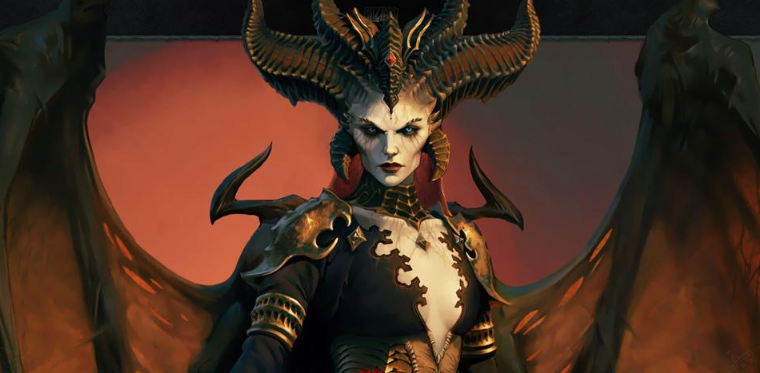Notifications

7 minutes, 2 seconds
-14 Views 0 Comments 0 Likes 0 Reviews

Diablo 4 has finally arrived, and players around the world are diving deep into the dark and dangerous world of Sanctuary. Whether you're a returning fan or a newcomer to the series, the game presents challenges and rewards in equal measure. This Diablo 4 walkthrough guide will help you navigate the game's expansive world, conquer its treacherous dungeons, and master the complex mechanics that make it both thrilling and daunting. In this article, we'll cover everything from the basic controls to more advanced strategies for progressing through the game's main story, side quests, and endgame content.
1. Getting Started: Basic Gameplay Mechanics
Before you dive into the depths of Diablo 4 Gold, it's important to familiarize yourself with the basic gameplay mechanics. The game is a dark action RPG that emphasizes exploration, combat, and character progression. Here's what you need to know:
Character Creation & Classes
Upon starting Diablo 4, you'll choose a character class. The game offers five distinct classes, each with its own unique playstyle and abilities:
Barbarian: A powerhouse who excels in close combat and can switch between different weapons and stances.
Sorceress: A spellcaster who uses elemental magic to deal damage, control crowds, and manipulate the battlefield.
Druid: A shapeshifter who can transform into animals like a werewolf or bear and command the forces of nature.
Rogue: A versatile, stealthy character who can excel in both ranged and melee combat.
Necromancer: A master of the dead, summoning minions and casting curses to obliterate foes.
Choose a class that aligns with your preferred playstyle. For instance, if you like to tank damage and charge into battle, the Barbarian might be ideal. If you prefer casting powerful spells from a distance, the Sorceress could be your best bet.
The Basic Controls
The controls in Diablo 4 are intuitive but offer enough depth to keep combat engaging:
Movement: Move your character using the WASD keys (PC) or joystick (console).
Attack: Left-click (PC) or a specific button (console) to perform basic attacks.
Skills: Hotkeyed or mapped to your controller for quick access, each class has a variety of skills that can be activated during combat.
Inventory: Open your inventory to manage gear, potions, and other important items.
Map: The world map is essential for navigating the vast open world of Sanctuary.
2. The Story: Main Questline
The main storyline of Diablo 4 centers around the return of the dark goddess, Lilith, who has come to wreak havoc on the world. Your character, no matter their class, will embark on a journey to stop Lilith and her followers from bringing ruin to humanity.
Act I: The Return of Lilith
The game begins in the region of Fractured Peaks, where you will investigate signs of demonic activity. Early quests introduce you to the game's systems and provide you with an opportunity to get used to combat mechanics. Key objectives in this act include:
Meeting various NPCs who will offer quests and help build the story.
Investigating the cause of demon attacks in the region.
Participating in a few key boss fights that introduce you to Diablo 4's core mechanics of combat and skill customization.
Act II: The Cult of the Scourge
As you continue through the world, you'll uncover the influence of The Cult of the Scourge, a powerful group of necromancers and cultists working in the shadows. These enemies will provide you with increasingly difficult challenges, and you'll need to develop your character further by unlocking new skills, upgrading your gear, and honing your combat strategies.
Act III: The Heart of Darkness
In Act III, the stakes reach their highest. Lilith's influence spreads, and more dangerous creatures begin to appear. You will travel through some of the most hostile areas in the game, including Hellish Plains and Demon's Keep. Major events such as world bosses and massive group raids will be introduced here.
Act IV: The Final Confrontation
In this climactic act, your final battle with Lilith is inevitable. You'll have to assemble a team of powerful allies, gather rare equipment, and uncover secrets hidden across the world. The conclusion of the game offers multiple endings, depending on your choices, which gives Diablo 4 a lot of replay value.
3. Leveling and Character Progression
Leveling Up
As you progress through the story and side quests, you will gain experience points (XP) that contribute to your level. In Diablo 4, your level cap is set at Level 100, but getting to the maximum requires a solid understanding of how to optimize your character's build.
When you level up, you gain access to:
Skill Points: Each class has a unique skill tree, and skill points can be spent to enhance abilities. For example, Sorceresses can enhance their fireball spells, while Barbarians might focus on buy Diablo IV Items improving their whirlwind attacks.
Attribute Points: These can be allocated to core stats such as Strength, Dexterity, Intelligence, and Vitality, which impact how your character performs in combat.
Legendary Gear: As you progress, you will encounter stronger enemies that drop powerful legendary items. These pieces of gear come with special modifiers that can drastically alter your playstyle.

